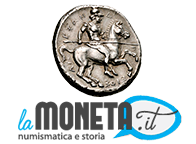Tutte le attività
Questo elenco si aggiorna automaticamente
- Ultima ora
-

Immagini declassificate dai satelliti spia americani della Guerra Fredda rivelano CENTINAIA di forti romani perduti in Siria e Iraq
Vel Saties ha aggiunto un nuovo link in Rassegna Stampa
LA NOTIZIA NON E' NUOVA, ESSENDO DATATA AL 2023, MA PUR SEMPRE INTERESSANTE. FONTE: https://dailytopis.com/declassified-images-from-american-cold-war-spy-satellites-reveal-hundreds-of-lost-roman-forts-across-syria-and-iraq/?fbclid=IwY2xjawNDEPJleHRuA2FlbQIxMABicmlkETFMSWR1ZnozNnY5a2dtbWVlAR7R_1GkKQOkGVhWRrkAVk6jrgK4abVSNJpdziymumSgP95oNZZTKdW1lhtKmw_aem_aaimQH2m3fPL_ceghfZoUg Declassified images from American Cold War spy satellites reveal HUNDREDS of lost Roman forts across Syria and Iraq American satellites that were built to keep an eye on the Russians during the Cold War are now yielding fascinating secrets about the Roman Empire. Researchers have studied satellite imagery that provides a unique snapshot of the Syrian Steppe in the 1960s and 1970s, in what is now Syria and Iraq. The experts identified the remains of 396 Roman forts – buildings that acted as bases for Roman troops during the days of the Empire nearly 2,000 years ago. Because of the unique layout of the forts – scattered all over the region rather than forming a line – the team believe they acted as bases and facilitated ‘the movement of people and goods’. Researchers have studied satellite imagery that provides a unique snapshot of the Syrian Steppe in the 1960s and 1970s, in what is now Syria and Iraq. The experts identified the remains of 396 Roman forts – buildings that acted as bases for Roman troops during the days of the Empire nearly 2,000 years ago. Because of the unique layout of the forts – scattered all over the region rather than forming a line – the team believe they acted as bases and facilitated ‘the movement of people and goods’. Archeologists studied declassified spy satellite imagery from the 1960s and 1970s (pictured) to find forts in part of the Roman Empire Researchers have studied satellite imagery that provides a unique snapshot of the Syrian Steppe in the 1960s and 1970s, in what is now Syria and Iraq. The team’s study area is highlighted in red But the new study – conducted by researchers at the Department of Anthropology, Dartmouth College in Hanover, New Hampshire – shows this may not always have been the case. The team say their results have ‘dramatic implications’ for modern understanding of Roman life. ‘We argue that most – but certainly not all – of the fort sites documented in this study are likely to be Roman and late Roman in date,’ they say. ‘The structures played a role in facilitating the movement of people and goods across the Syrian steppe.’ It’s already known that the Syrian steppe was the location of many forts built by the Romans (although, due to the vastness of the Empire, fort remains can be found all over Europe, including in Britain). Even if no traces of the constructions can be seen by the naked eye on the ground, their imprint on the landscape can be picked up by aerial imagery, often using light sensing methods. An initial survey of the Syrian Steppe was published by pioneering French archeologist Antoine Poidebard in 1934, who took aerial photos from his biplane. He recorded a line of 116 forts and noted that their position formed a line and corresponded with the eastern frontier of the Roman Empire. Because of this, Poidebard was sure the forts acted as a defensive line to protect the eastern provinces from Arab and Persian incursions from the west. Pictured, the 1934 aerial photographs of select Roman forts in the region surveyed by French archeologist Antoine Poidebard The study authors were able to identify 396 Roman forts – buildings that acted as bases for Roman troops during the days of the Empire nearly 2,000 years ago. Depicted here is Roman fort at Portchester, England in AD 345 ‘Since the 1930s, historians and archaeologists have debated the strategic or political purpose of this system of fortifications,’ said lead author of the new study Professor Jesse Casana at Dartmouth College. ‘But few scholars have questioned Poidebard’s basic observation that there was a line of forts defining the eastern Roman frontier.’ For the study, the team wanted to see if they could find evidence of extra forts that Poidebard had not found, which could potenitally challenge the Frenchman’s assumptions. They used declassified spy satellite imagery from the Cold War – two different programmes codenamed Corona and Hexagon. ‘These images formed part of the world’s first spy satellite programmes, with Corona imagery collected from 1960 to 1972 and its successor, Hexagon imagery, collected from 1970 to 1986,’ the authors say. By using the forts found by Poidebard as a reference point, the team was able to identify an extra 396, bringing the total to 512. But what was interesting was they were found widely distributed across the region from east to west, which does not suggest they together formed a border, as Poidebard had believed. Instead, the researchers think the forts were constructed to support trade between the region and protect Roman caravans travelling between the eastern provinces and non-Roman territories. Meanwhile, the distribution of Poidebard’s forts is merely a product of ‘discovery bias’, the team claim. ‘The addition of these forts questions Poidebard’s defensive frontier thesis and suggests instead that the structures played a role in facilitating the movement of people and goods across the Syrian steppe,’ they write. They used declassified spy satellite imagery from the Cold War – two different programmes codenamed Corona and Hexagon. Pictured is the Hexagon satellite vehicle Distribution maps of forts documented by (top) French archeologist Antoine Poidebard nearly a century ago, compared to (bottom) distribution of forts newly found on satellite imagery Images from the Corona US spy satellite programme revealing some of the Roman forts ‘Such forts supported a system of caravan-based interregional trade, communication and military transport.’ Already, recent research has reimagined Roman frontiers as sites of ‘cultural exchange’ rather than barriers where bloody conflict was constantly held. Although conflict likely occurred at the forts, this was likely not their sole purpose, the experts suggest. And although the Romans were a military society, they valued trade and communication with regions that were not under their direct control. ‘We can similarly view the forts of the Syrian steppe as enabling safe and secure transit across the landscape, offering water to camels and livestock, and providing a place for weary travellers to eat, drink and sleep,’ the team add. This indicates that the borders of the Roman territory were less rigidly defined and perhaps not the centres of bloodshed and conflict as previously thought. Because the declassified satellite images are around half a century old, many of the forts have since been destroyed by urban or agricultural development, the team say. Hopefully, as more declassified imagery, such as U2 spy plane photos, become available, new discoveries could be made and archeological sites could be saved. LEGGI ANCHE: https://www.smithsonianmag.com/smart-news/declassified-cold-war-photos-reveal-hundreds-of-unknown-roman-era-forts-180983151/ https://edition.cnn.com/2023/10/25/world/roman-forts-spy-satellite-photos-scn https://www.nationalgeographic.com/history/article/roman-forts-archaeology-cold-war-spy-satellite-photos https://www.ancient-origins.net/news-history-archaeology/roman-fort-images-0019681 https://www.arabnews.com/node/2398011/amp -
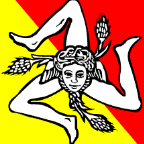
Marengo Umberto I 1882 -Verifica autenticità-
SicilianoMagnoGreco ha risposto a un topic di Bolio inviato in Richiesta Identificazione/valutazione/autenticità
Buongiorno, credo che per perlinatura, firme ec.. la campana a morto sta suonando. -
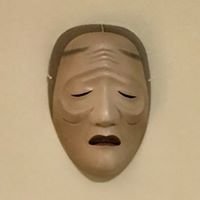
Marengo Umberto I 1882 -Verifica autenticità-
Alan Sinclair ha risposto a un topic di Bolio inviato in Richiesta Identificazione/valutazione/autenticità
Confermo i dubbi che già avevo espresso per i dati ponderali, la moneta non mi convince. -
ilnumismatico ha iniziato a seguire 1 Soldo 1813, cosa può essere successo...
-
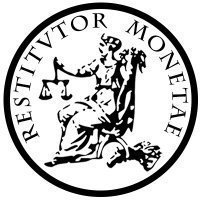
1 Soldo 1813, cosa può essere successo...
ilnumismatico ha risposto a un topic di ilLurkatore inviato in Monetazione degli Stati Preunitari (1800-1860)
Sembrerebbe battuta fuori virola. Potresti indicare il diametro preciso? E se puoi, anche il peso Sentiamo @lorluke che è specialista -

120 grana 1795 vero? o falso ?
gennydbmoney ha risposto a un topic di SELLY inviato in Monete e Medaglie delle Due Sicilie, già Regno di Napoli e Sicilia
Direi di sì,per questo ho chiesto all' utente SELLY con che strumenti ha rilevato peso e diametro... -

5 lire Aquilotto 1926
SicilianoMagnoGreco ha risposto a un topic di Atexano inviato in Regno d'Italia: identificazioni, valutazioni e altro
Buongiorno, concordo con i consigli di @Carlo. e @caravelle82. Utilizzando le capsule limiti al minimo il contatto con l'aria. -
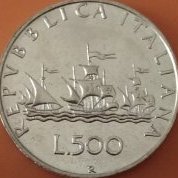
Marengo Umberto I 1882 -Verifica autenticità-
caravelle82 ha risposto a un topic di Bolio inviato in Richiesta Identificazione/valutazione/autenticità
La perlinatura é troppo "tondeggiante" vero? -
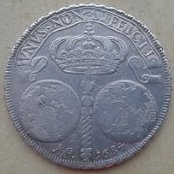
120 grana 1795 vero? o falso ?
fricogna ha risposto a un topic di SELLY inviato in Monete e Medaglie delle Due Sicilie, già Regno di Napoli e Sicilia
Le rare piastre coniate sui tondelli dei ducati hanno il diametro più stretto, come appunto quello dei ducati? -

Un doppio orecchio 1855 in arrivo, spero...........
fricogna ha risposto a un topic di favaldar inviato in Monete e Medaglie delle Due Sicilie, già Regno di Napoli e Sicilia
Bella psichedelica. -
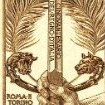
Filatelia Monumenti di carta. (Carrellata di francobolli dal mondo)
PostOffice ha risposto a un topic di PostOffice inviato in Filatelia e Storia Postale
- Oggi
-
Marengo Umberto I 1882 -Verifica autenticità-
torpedo ha risposto a un topic di Bolio inviato in Richiesta Identificazione/valutazione/autenticità
Beh mi sembra un ottimo confronto, dal quale noto che l'esemplare di Dx è molto più definito nei dettagli,nei particolari, mentre quello di Sx sembra molto più pasticciato e approssimativo. Ovviamente è soltanto un mio parere, basato su quello che vedo, perché non sono un esperto 🙂. -

news e informazioni filateliche Notizie da Unificato & Vaccari.
PostOffice ha risposto a un topic di PostOffice inviato in Filatelia e Storia Postale
Alle 16:00 del 2 agosto 1784, la prima diligenza per il trasporto della posta reale partì dalla Swan Tavern di Bristol. Con una velocità media di sette miglia orarie, arrivò a Bath due ore dopo, fermandosi al Three Tuns per ritirare la posta di Bath e continuò per Londra, arrivando allo Swan with Two Necks in Lad Lane in città alle 8 del mattino seguente. Questo importante progresso nello sviluppo del servizio postale britannico fu dovuto principalmente a John Palmer, proprietario di un teatro a Bath. Il suo lavoro richiedeva molti viaggi da e per Londra per ingaggiare attori e autori di opere teatrali per i suoi teatri. Durante questi viaggi Palmer notò che le diligenze superavano costantemente i postini ufficiali; "ragazzi pigri", riferì in seguito, "su ronzini logori". Tale era la mancanza di fiducia nella velocità della posta a cavallo che, durante l'ultima metà del XVIII secolo, le persone con lettere urgenti preferivano pagare una diligenza passeggeri che la prendesse per loro, piuttosto che ricorrere al postino. Nel 1784, Palmer, un uomo di una certa visione ed energia, inviò una petizione a William Pitt, il Primo Ministro, dicendo: Invece di essere il mezzo di trasporto più veloce del paese, la posta è quasi il più lento. Le strade sono migliorate, altri corrieri hanno migliorato il loro ritmo, ma le lettere sono lente come sempre... vengono spesso rubate per strada, così che in molti casi vengono provati altri mezzi e il governo perde il profitto. Se i commercianti per maggiore sicurezza inviano con la diligenza, perché le diligenze non dovrebbero trasportare la posta con l'ulteriore sicurezza di guardie armate? Che ci sia un sistema completo di tali diligenze; che circolino su tutte le principali strade del regno; che partano da Londra ogni giorno alla stessa ora e arrivino nelle varie città a orari fissi Impressionati dal piano di Palmer, Pitt e i Lord del Tesoro ordinarono che il suo progetto venisse sperimentato sulla strada da Londra a Bristol. L'esperimento fu un successo. La gente si riversò lungo le strade per applaudire il servizio inaugurale di diligenze di John Palmer. La resistenza conservatrice e l'opposizione dell'ufficio postale furono spazzate via da un tumulto di acclamazioni ed entusiasmo del pubblico. Negli anni successivi, le diligenze postali divennero una visione familiare, catturando l'immaginazione di tutti i grandi scrittori e pittori romantici dell'epoca vittoriana. -
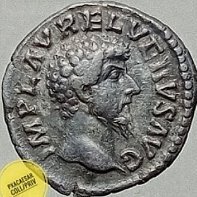 Pxacaesar ha cambiato la sua foto del profilo
Pxacaesar ha cambiato la sua foto del profilo -
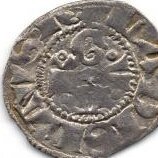
Marengo Umberto I 1882 -Verifica autenticità-
santone ha risposto a un topic di Bolio inviato in Richiesta Identificazione/valutazione/autenticità
Non mi piace, firma orrenda e altri particolari -

Monete francesi in oro vendute al facciale
Jack ma ha risposto a un topic di GiAnMMV inviato in Euro Monete da collezione Italiane e delle altre Zecche Europee.
Parlo dell'acquisto di 2 scudi d'oro di San marino Pompeo Battoni 2008 marengo da un privato vecchio collezionista che vuole venderli. Sicuramente originali e di provenienza certificata essendo uno storico collezionista. Come detto infatti sotto lo spot non riesco a trovarle le sterline. Riesco a trovare poco solo da privati monete di san marino ma anche queste rare sono occasioni di vecchi collezionisti. -
Con un cotton fiock o con un pezzettino di carta tenuta sulla punta della pinzetta bagna la parte macchiata con un po' di candeggina diluita in un piccolo contenitore con una goccia di acqua, parliamo di gocce quindi minuscole quantità. Avanti e dietro.. vedi che succede. E poi eventualmente risciacqua con lo stesso sistema senza candeggina dopo averlo lasciato bagnato per un dieci quindici minuti. Comunque il lavaggio con il bicarbonato di sodio ha gia' diminuito l' aggressività del fungo.
-

5 lire Aquilotto 1926
caravelle82 ha risposto a un topic di Atexano inviato in Regno d'Italia: identificazioni, valutazioni e altro
Ciao, usa le capsule -

Francobollo inglese Penny Black - plate 7 - lettere A J
PostOffice ha risposto a un topic di Alan Sinclair inviato in Filatelia e Storia Postale
Li trovi anche in Italia senza andare dai grossi nomi del settore che ti fanno pagare anche quello. Per non fare pubblicità che potrebbe creare problemi al forum se vuoi privatamente ti mando i nomi. -
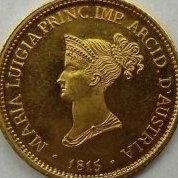
Marengo Umberto I 1882 -Verifica autenticità-
Bolio ha risposto a un topic di Bolio inviato in Richiesta Identificazione/valutazione/autenticità
All'apertura della discussione ho voluto, nei vostri confronti, mantenere una posizione all'insegna dell'obbiettività al fine di non alimentare "correnti valutative" ma, allego ora, una prima comparazione con una altra moneta che ho in collezione...la moneta in questione è a Sx mentre quella già in mio possesso è alla Dx...dite Voi. - Ieri
-

Matematica e geometria nei giochi enigmistici
apollonia ha risposto a un topic di apollonia inviato in Agorà
Un collezionista regala tre monete a suo fratello e di quelle che rimangono, la metà più mezza moneta la dà al primo figlio, la metà delle rimanenti più mezza moneta la dà al secondo figlio e le ultime tre monete sono per il terzo figlio. Quante sono in tutto le monete che il collezionista ha voluto donare? apollonia -
Raccolta di rebus attinenti alla Numismatica
vv64 ha risposto a un topic di apollonia inviato in Agorà
Ardisco non ordisco buona notte, Valerio -

Due quarantesimi anniversari molto particolari: il Finto allarme del 1983 e Able Archer 83
ART ha risposto a un topic di ART inviato in Agorà
L'originale come fu inizialmente concepito: -
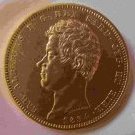
Marengo Umberto I 1882 -Verifica autenticità-
Pontetto ha risposto a un topic di Bolio inviato in Richiesta Identificazione/valutazione/autenticità
Osservando queste ultime fotografie, a mio avviso è un falso. Attendiamo però anche altri pareri -

Marengo Umberto I 1882 -Verifica autenticità-
Bolio ha risposto a un topic di Bolio inviato in Richiesta Identificazione/valutazione/autenticità
Riallego altre due foto con più risoluzione -
PRESSA A BILANCIERE da conio
coinzh ha risposto a un topic di Bolio inviato in Tecnologie produttive
la febbre dell'oro. vuoi coniare in oro perché forse più molle/malleabile dell'argento ? -
Moer si è registrato sul forum
-

Raccolta di rebus attinenti alla Numismatica
apollonia ha risposto a un topic di apollonia inviato in Agorà
apollonia
Lamoneta.it
Il network
Hai bisogno di aiuto?
